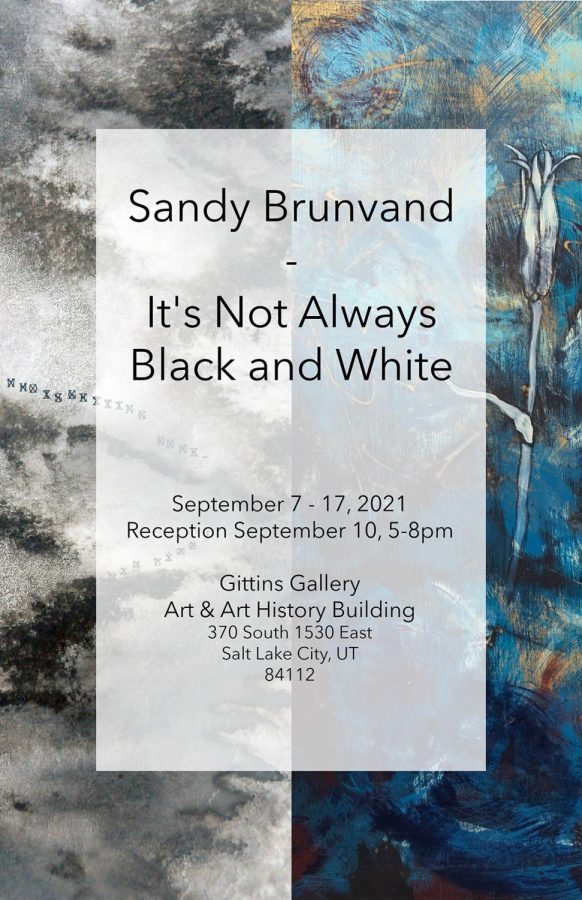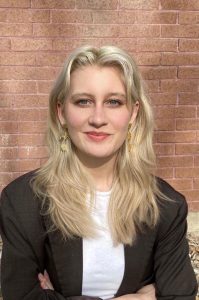Space and Body in Sandra Brunvand’s ‘It’s Not Always Black and White’
September 19, 2021
After a thirty-year teaching career, associate art teaching lecture professor Sandra Brunvand is bidding the University of Utah farewell with her studio exhibition “It’s Not Always Black and White.”
Body and Mind
“It’s a real honor to be in that space — it’s the heart of that building,” Brunvand says on her exhibition. While the Gittins Gallery is the Department of Art and Art History’s heart, “It’s Not Always Black and White” is an extension of Brunvand’s body, both physically and mentally.
The exhibition is spatially and chronologically circulatory, as Brunvand’s early works in color sit like lungs at the core of the exhibition while later works in black and white form a ribcage on the outer edges. The breadth of artworks is a mirror to Brunvand’s personality and essence, drawing on important people and objects from Bruvand’s life.
The exhibition features Brunvand’s earliest work, a drawing of a dog, with the topmost right corner reading “Sandy 4 Years” in her father’s penmanship while sitting in a frame constructed by her husband. Intimate details such as these truly add to the exhibition’s personal nature via the connection to Brunvand herself.
The use of wax provides yet another congruence to Brunvand’s body as several artworks involve detritus embedded in wax. “I have really bad arthritis, I started using wax quite some time ago so that healing property is what I wanted to go into my artwork,” says Brunvand.
In addition to wax materials, Brunvand also uses some of her dog’s hair as well as gifted player piano scrolls within her pieces. “I’ve always thought there was a lot of my soul in there, my personality.”
From Limitations to Landscapes
In an artistic transference from physically taxing works in color, Brunvand shifts to a limited black and white palate with ecotone landscapes. “My feet just wanted to keep hiking [in Utah],” she said. “I loved the landscape … even when I’m painting abstract work I always see a landscape.”
These representational landscapes provide a biodiverse area of overlap that serves for unlimited growth, beckoning the mantra “It’s Not Always Black and White.” For Brunvand this is certainly true, as the representational landscapes were the shift into Brunvand’s mental space in current events and away from manual works due to limitations from the same body.
The landscapes are specifically curated to words of empowering women, retracted Trump tweets, police messaging, and current event headlines that have been manually printed with a typewriter. “Not only did the words activate the space, but the space activated the words,” said Brunvand, as she chose the landscapes as devices paired to current event narratives that sparked her inspiration.
To Brunvand, “that series was a form of self-care,” and again viewers recognize Brunvand’s mental body within the exhibition. When asked what she wishes viewers to get out of viewing the exhibition, Brunvand says “pay attention to the headlines … how do we self-care when times are difficult?”.
“I want to linger longer in everything,” said Brunvand on her bittersweet farewell from teaching. “I’m certainly heading in a new way.”
“It’s Not Always Black and White” is on view in the Gittins Gallery from Sept. 7-17, 2021.








